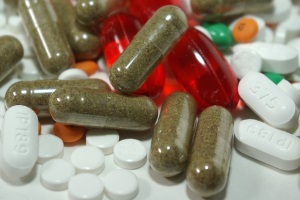 In August 2018 I was fortunate to be able to attend, for the first time, the Dioxin 2018 conference in Krakow, Poland. This conference combined the 38th International Symposium on Halogenated Persistent Organic Pollutants (POPs) & 10th International PCB Workshop as described in a previous post by Maddalena Bonanomi. I was not only surprised by the number of chemical classes of different contaminants covered, and the high level of interest in using non-targeted approaches for the detection of emerging contaminants, but also to learn the analysis of polybrominated diphenyl ethers (PBDEs) flame retardants remains such a hot topic.
In August 2018 I was fortunate to be able to attend, for the first time, the Dioxin 2018 conference in Krakow, Poland. This conference combined the 38th International Symposium on Halogenated Persistent Organic Pollutants (POPs) & 10th International PCB Workshop as described in a previous post by Maddalena Bonanomi. I was not only surprised by the number of chemical classes of different contaminants covered, and the high level of interest in using non-targeted approaches for the detection of emerging contaminants, but also to learn the analysis of polybrominated diphenyl ethers (PBDEs) flame retardants remains such a hot topic.
Most people might be unaware of the volume and variety of different chemicals used as flame retardants in and on electronic devices such as televisions and computers, plastics, textiles, soft furnishing, in cars, etc. to improve fire safety. I can personally testify to their effectiveness in preventing materials from burning as I was in the ‘hot seat’ when involved in car accident in which my car burst into flames. The engine compartment was destroyed completely, but the cabin compartment, no doubt impregnated with flame retardants, remained intact. Nonetheless, on the disposal of trashed or unwanted treated items, these persistent organic chemicals can leach into the environment. As they do not degrade easily they can bioaccumulate and ultimately enter the food chain where they mainly occur in food of animal origin, such as fish, meat, milk and derived products.
Humans are therefore exposed to PBDEs mainly through ingestion of contaminated food and breathing contaminated air. Since PBDEs are potentially linked to a wide range of adverse health effects in humans including endocrine disruption, neurodevelopmental toxicity and cancer, etc. there is increasing concern regarding public health. These concerns, and the fact that many of the flame retardants including some PBDEs (penta, tetra and deca BDE) are banned from use, highlight the need for ongoing monitoring of environmental and food samples. Whether the laboratories want to undertake targeted or non-targeted analysis, Thermo Fisher Scientific can provide the most comprehensive portfolio of advanced high resolution and triple quadrupole mass spectrometers to meet any monitoring requirement.
Comprehensive Monitoring of PBDEs Using HRMS
At Dioxin 2018 Heinz Mehlman described the benefits of the DualData Double Focusing Magnetic Sector (DFS) mass spectrometer system for maximizing sample through-put and productivity. Recognized as the gold standard approach for dioxin analysis this instrument can also provide robust ultra-trace quantification of targeted PBDEs and other contaminants. One DFS system can be fitted with two GCs, up to four injectors, and up to four analytical columns so it is always ready to swap between analysis, dioxins, PAHs, PCB, and PBDEs for example, with minimum downtime.
Jane Cooper, Thermo Fisher Scientific, presented a lecture titled ‘Overcoming analytical challenges in PBDEs quantification in environmental samples using GC-Orbitrap.’ A study in collaboration with the Institute of Environmental Assessment and Water Research (IDAEA), Spanish Council for Scientific Research (CSIC) was undertaken to evaluate the capabilities of the Thermo Scientific Exactive GC Orbitrap GC-MS system for the targeted quantification (Selected Ion Monitoring, SIM mode) of PBDEs in complex environmental samples. The separation of 27 native PBDE congeners and sixteen 13C labelled PBDE internal standards was achieved in <11 minutes with the excellent chromatographic resolution of the critical pair (BDE-49 and BDE-71). The limits of quantification were 1.0 ng/mL for mono- to penta-PBDEs, 2.0 ng/mL for hexa- to octa-PBDEs, and 5 ng/mL for nona- to deca-PBDEs with excellent repeatability (<10 % RSD) while the high mass accuracy and isotopic pattern match allowed correct identification of PBDEs at low concentrations in samples of sludge, sediment, dust and air. This demonstrates the flexibility of the GC-Orbitrap MS system which is typically operated using full-scan acquisition for the analysis of multiclass contaminants including discovery of emerging contaminants to complement perfectly the capabilities of the DFS system.
To obtain further information view the presentations at thermofisher.com/DioxinConference and read an application note titled Overcoming analytical challenges for polybrominated diphenyl ethers (PBDEs) analysis in environmental samples using gas chromatography – Orbitrap mass spectrometry.
Monitoring of PBDEs in Food with an Advanced GC Triple Quadrupole MS System
In collaboration with Fera Science, UK, Thermo Fisher Scientific have evaluated the use of a TSQ 9000 triple quadrupole GC-MS/MS instrument equipped with an Advanced Electron Ionisation (AEI) source for the analysis of PBDEs in food. The use of a new high selectivity TraceGOLD™ PBDE capillary column (p/n 26061-0350) provided chromatographic resolution of the critical pair BDE-49 and BDE-71) in just 11 minutes, while the AEI source which provides highly efficient electron ionization of analytes and a more tightly focused ion beam, enabled an extreme level of sensitivity to be achieved. Instrument detection limits ranging from 2 to 100 fg on-column (corresponding to 0.003–0.125 ng/kg in extracted fat) were comparable to the performance of GC-Orbitrap technology operated in targeted SIM mode. The AEI source is extremely robust and the system is highly suited for routine targeted analysis. For more details, watch the on-demand webinar titled ‘Fast, Sensitive, and Robust PBDE Analysis in Food’ and read the application note titled ‘Fast, ultra-sensitive analysis of PBDEs in food using advanced GC-MS/MS technology.’
You may also be interested to:
- Download the new resource guide containing information on the history of POPs, the implications of their early occurrence, and today’s analytical testing methods for their accurate determination in chemical laboratories as an introduction to this global issue.
- Take a look at the POPs brochure to learn more about the analysis of POPs in food.
- Visit: com/GoldStandard for videos and resources on POPs.

 Nuestra comunidad de alimentos y bebidas presenta información útil para las tareas diarias de los profesionales encargados de ofrecer alimentos y bebidas bajo los máximos estándares de calidad. Aquí encontrarán a su disposición los más novedosos recursos técnicos, enfocados a la obtención de la máxima seguridad y calidad de los alimentos.
Nuestra comunidad de alimentos y bebidas presenta información útil para las tareas diarias de los profesionales encargados de ofrecer alimentos y bebidas bajo los máximos estándares de calidad. Aquí encontrarán a su disposición los más novedosos recursos técnicos, enfocados a la obtención de la máxima seguridad y calidad de los alimentos. Nuestra comunidad de medicina forense, brinda recursos técnicos para que los profesionales del área forense, puedan llevar a cabo sus tareas analíticas con mayor facilidad y seguridad. Para ello, ponemos a su disposición los últimos desarrollos analíticos.
Nuestra comunidad de medicina forense, brinda recursos técnicos para que los profesionales del área forense, puedan llevar a cabo sus tareas analíticas con mayor facilidad y seguridad. Para ello, ponemos a su disposición los últimos desarrollos analíticos. Nuestra comunidad de producción industrial, se caracteriza por brindar soporte a aquellas personas que trabajan en la producción de químicos, plásticos y metales, así también como la producción minera. Aquí encontrarán recursos técnicos para poder llevar a cabo sus acciones diarias de la forma más eficaz, generando así productos de mejor calidad y con menores costos en el proceso.
Nuestra comunidad de producción industrial, se caracteriza por brindar soporte a aquellas personas que trabajan en la producción de químicos, plásticos y metales, así también como la producción minera. Aquí encontrarán recursos técnicos para poder llevar a cabo sus acciones diarias de la forma más eficaz, generando así productos de mejor calidad y con menores costos en el proceso. Nuestra comunidad de investigación en ciencias de la vida, se centra en brindar apoyo a los profesionales de esta área, para que puedan desarrollar a través de nuestros recursos técnicos, nuevas y más eficientes formas de investigación y análisis con las herramientas tecnológicas actuales.
Nuestra comunidad de investigación en ciencias de la vida, se centra en brindar apoyo a los profesionales de esta área, para que puedan desarrollar a través de nuestros recursos técnicos, nuevas y más eficientes formas de investigación y análisis con las herramientas tecnológicas actuales. En nuestra comunidad de medio ambiente encontrarán las últimas técnicas, en forma de webinars y notas de aplicación, para colaborar en la preservación de los recursos naturales de nuestro planeta. También podrán encontrar equipos y consumibles imprescindibles para mejorar el desempeño de los profesionales abocados a esta área.
En nuestra comunidad de medio ambiente encontrarán las últimas técnicas, en forma de webinars y notas de aplicación, para colaborar en la preservación de los recursos naturales de nuestro planeta. También podrán encontrar equipos y consumibles imprescindibles para mejorar el desempeño de los profesionales abocados a esta área. En nuestra comunidad dedicada al sector farmacéutio y Bio-Farmacéutico, encontraran una selección de artículos y webinars destinados a enriquecer la labor diaria de los profesionales de éste área. Asimismo también encontrarán las últimas tecnologías en equipos y consumibles enfocados en el área farmacéutica para realizar sus tareas de la mejor forma posible.
En nuestra comunidad dedicada al sector farmacéutio y Bio-Farmacéutico, encontraran una selección de artículos y webinars destinados a enriquecer la labor diaria de los profesionales de éste área. Asimismo también encontrarán las últimas tecnologías en equipos y consumibles enfocados en el área farmacéutica para realizar sus tareas de la mejor forma posible.







